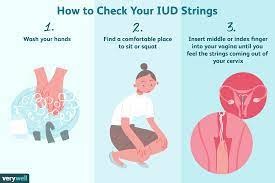Hair loss is a common problem that affects both men and women. It can be caused by a variety of factors, including genetics, hormones, medical conditions, and lifestyle choices. Fortunately, there are a number of effective treatments available to help restore hair growth and reduce the appearance of baldness. In this article, we will discuss the causes of hair loss, as well as the available treatments and their effectiveness. We will also provide tips on how to prevent hair loss and promote healthy hair growth.
Exploring the Different Types of Hair Loss and Their Causes
Hair loss is a common problem that affects millions of people around the world. It can be caused by a variety of factors, including genetics, hormones, medical conditions, and lifestyle choices. Understanding the different types of hair loss and their causes can help you determine the best course of action for managing your hair loss.
The most common type of hair loss is androgenetic alopecia, also known as male or female pattern baldness. This type of hair loss is caused by a combination of genetic and hormonal factors. It typically begins with a receding hairline and thinning of the hair on the crown of the head. Over time, the hair loss may progress to complete baldness.
Alopecia areata is another type of hair loss that is caused by an autoimmune disorder. In this condition, the body’s immune system mistakenly attacks the hair follicles, resulting in patchy hair loss. Alopecia areata can affect both men and women and can cause complete baldness.
Telogen effluvium is a type of hair loss that is caused by a disruption in the normal hair growth cycle. This type of hair loss is usually temporary and is caused by a sudden shock to the body, such as a major illness, surgery, or extreme stress.
Traction alopecia is a type of hair loss that is caused by excessive tension on the hair follicles. This type of hair loss is most common in people who wear tight hairstyles, such as braids or ponytails.
Finally, nutritional deficiencies can also cause hair loss. A lack of certain vitamins and minerals, such as iron, zinc, and vitamin B12, can lead to thinning hair.
No matter what type of hair loss you are experiencing, it is important to seek medical advice to determine the cause and the best course of action. With the right treatment, you can manage your hair loss and restore your confidence.
Understanding the Role of Genetics in Hair Loss and How to Manage It
Hair loss is a common condition that affects millions of people around the world. While it can be caused by a variety of factors, genetics plays a major role in determining who is affected and how severe the hair loss is. Understanding the role of genetics in hair loss can help people manage their condition more effectively.
Genetic hair loss is caused by a combination of genetic and hormonal factors. It is most commonly seen in men, but it can also affect women. The condition is known as androgenetic alopecia, or male-pattern baldness. It is caused by an inherited sensitivity to the hormone dihydrotestosterone (DHT). DHT is a byproduct of testosterone and is responsible for the development of male characteristics, such as facial hair and a deep voice. In people with genetic hair loss, DHT causes the hair follicles to shrink, leading to thinning hair and eventual baldness.
Genetic hair loss is typically permanent, but there are treatments available to help manage the condition. The most common treatment is medication, such as finasteride and minoxidil. These medications work by blocking the effects of DHT on the hair follicles, allowing them to remain healthy and produce new hair. In some cases, hair transplant surgery may be recommended to restore lost hair.
In addition to medical treatments, lifestyle changes can also help manage genetic hair loss. Eating a healthy diet, exercising regularly, and reducing stress can all help to reduce the effects of DHT on the hair follicles. Wearing a hat or scarf to protect the scalp from the sun can also help to reduce hair loss.
Understanding the role of genetics in hair loss can help people manage their condition more effectively. With the right combination of medical treatments and lifestyle changes, it is possible to slow down or even stop the progression of genetic hair loss.
Conclusion
Understanding hair loss is an important part of maintaining healthy hair. Knowing the causes and effective treatments can help you take the necessary steps to prevent or treat hair loss. While there is no one-size-fits-all solution, there are a variety of treatments available that can help you manage your hair loss. It is important to consult with a doctor or dermatologist to determine the best course of action for your individual situation. With the right treatment, you can restore your hair and regain your confidence.
 Paragard IUD has given women the convenience of planning their families. However, the device can break within their bodies during the removal process. In addition, patients and doctors have cited that Paragard’s one or both arms get broken during removal and lodge in the uterus.
Paragard IUD has given women the convenience of planning their families. However, the device can break within their bodies during the removal process. In addition, patients and doctors have cited that Paragard’s one or both arms get broken during removal and lodge in the uterus.